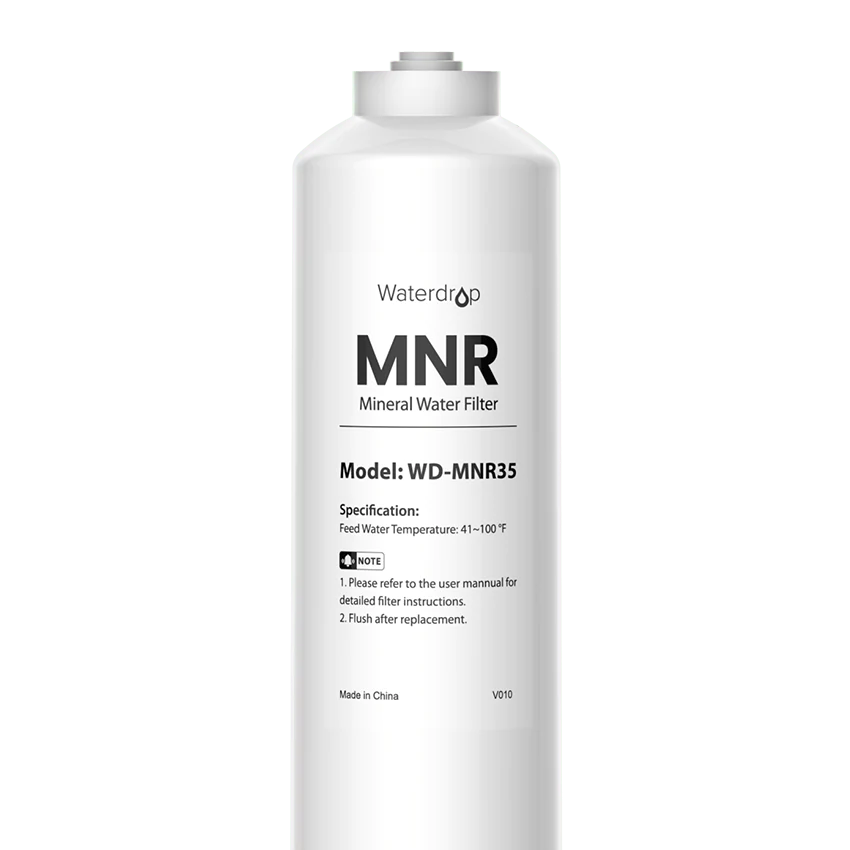“Can I install your REMIN on a Waterdrop Reverse Osmosis system?”
The quick answer to that question is “yes”. In fact it’s a simple swap out since the fittings are identical, but the more interesting issue is why so many people want to replace their current Waterdrop MNR filter.

The average customer does not and since there is little to no oversight or agreement on what constitutes remineralization, we decided to cut one open and show why there is a direct correlation between a cheap price and poor performance.
Although even we were surprised by what we found.
We fully expected to cut it open and find calcite. It’s the go-to ingredient for most of these cheap remineralizers. A version of calcium better suited to maintain plumbing infrastructure and pipes than for human consumption. It bumps the TDS level up very quickly and then usually falls just as fast after some use.
But instead of calcite, we got a carbon block. Carbon filters like this are used in 2 ways, either as a prefilter to eliminate chlorine or as a post filter to take care of the funky flavors you sometimes get from a storage tank full of acidic and aggressive water.
 |
 |

To understand what those flakes are you have to go back to how they describe the MNR filter. They say it uses something called “PCC technology.” In their product description, you’ll find this.
“Waterdrop remineralization filter adopts PCC technology to activate the crystalline structure of minerals, simulates the formation mechanisms of mineral spring to activate every mineral and guarantees quality”
There is no description of what that is or how it works within the filter and a plain reading is more than a little confusing. You wouldn’t know unless you have been around mineral additives and water mineralization what PPC is alluding to. Even a google search really won’t help you much.
PCC is an abbreviation for Precipitated Calcium Carbonate. Carbonate is a rock, chalk or limestone version of calcium. It’s commonly found in groundwater, so it’s not a bad version of calcium, but as you can see from the picture, there isn’t much included in the filter. Definitely not enough to increase the TDS much at all or have any chance to perform for the claimed 12 months.

Which ultimately means the Waterdrop MNR “mineralization” filter is a carbon block post filter with a little bit of calcium carbonate added.
For the end user, the result is you’ll see next to nothing added to your water.



